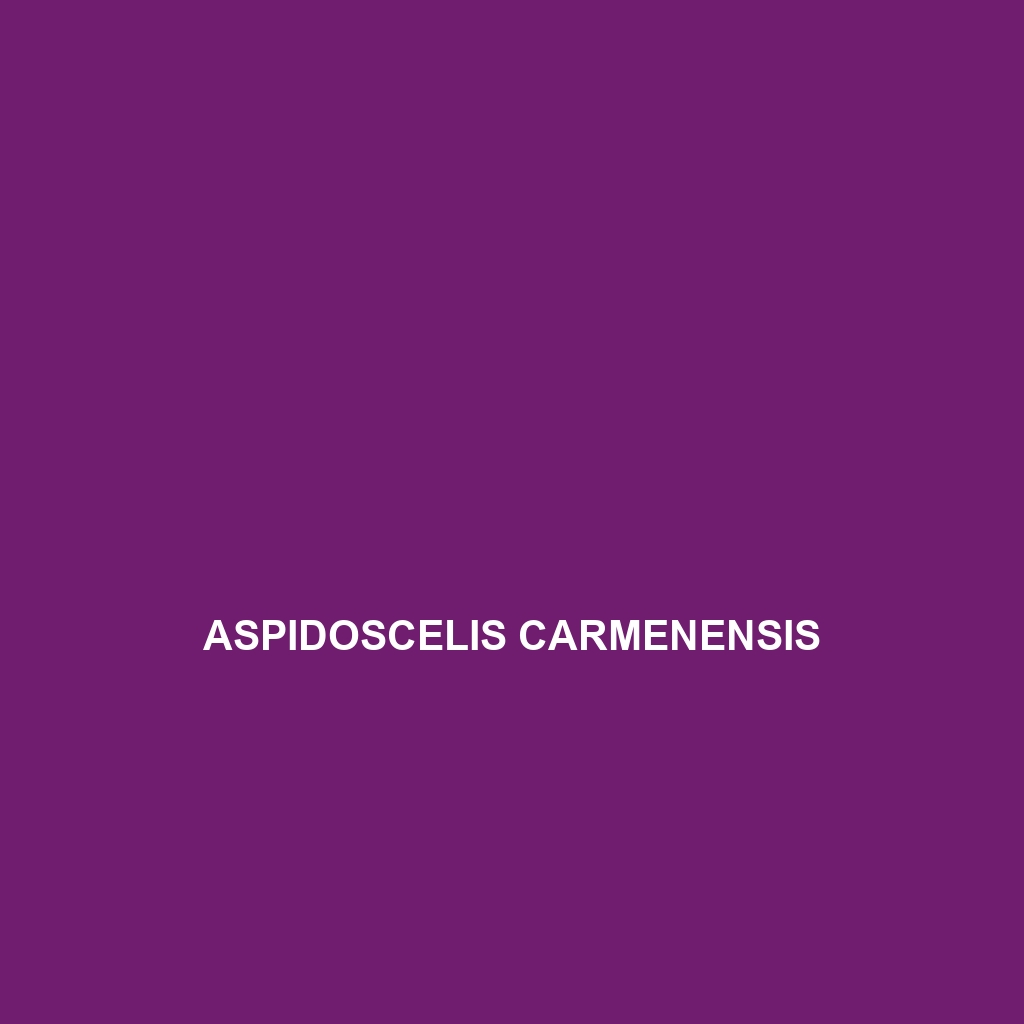Description of Aspidoscelis carmenensis
Common Name: Aspidoscelis carmenensis
Scientific Name: Aspidoscelis carmenensis
Habitat:
Aspidoscelis carmenensis, commonly known as the Carmen Whiptail Lizard, is primarily found in the arid and semi-arid environments of northwestern Mexico. This species inhabits a range of geographic locations including scrublands, grasslands, and rocky outcrops in regions such as Baja California Sur and Sonora. The lizard thrives in areas with abundant sun and well-drained substrates, making it well-suited for its desert ecosystem.
Physical Characteristics:
The Carmen Whiptail lizard averages about 6 to 8 inches in length, with a slender and elongated body. Its coloration typically features a combination of tan, light brown, and darker stripes along the back, providing effective camouflage against its natural surroundings. The smooth scales and long tail are distinct characteristics, with the tail being up to twice the length of the body. The species is often recognized by its unique patterning and agile form, which aid in quick movements to evade predators.
Behavior:
Aspidoscelis carmenensis is known for its active diurnal behavior, predominantly basking in the sun during daylight hours. The lizard exhibits strong territoriality, with males often engaging in displays of dominance. It utilizes burrows and rock crevices for shelter and as a refuge from extreme temperatures. The species is also known for its agility, often displaying rapid movements to avoid predation and to capture prey.
Diet:
The diet of Aspidoscelis carmenensis consists mainly of insects, including ants, beetles, and grasshoppers, making it an important insectivore within its ecosystem. This lizard employs a sit-and-wait strategy to capture prey, displaying remarkable speed and accuracy when hunting. Additionally, it may occasionally consume plant matter, particularly during periods of food scarcity.
Reproduction:
Aspidoscelis carmenensis typically breeds in the spring months, with females laying clutches of 2 to 6 eggs. Nesting occurs in sandy or loose soil areas, where the eggs are incubated until hatching. Offspring emerge as miniature replicas of the adults, fully capable of fending for themselves. The reproductive strategy of this species allows for population sustainability, especially in stable environmental conditions.
Conservation Status:
As of the latest assessments, Aspidoscelis carmenensis is classified as ‘Least Concern’ by the IUCN, with no immediate threats impacting its population. However, habitat loss due to urban development and agriculture could pose potential risks in the future. Ongoing monitoring is essential to ensure the species remains secure.
Interesting Facts:
A unique aspect of Aspidoscelis carmenensis is its reproductive mode; it is a parthenogenetic species, meaning that females can reproduce without the presence of males. This fascinating ability may contribute to its survival in isolated habitats.
Role in Ecosystem:
Aspidoscelis carmenensis plays a vital role in its ecosystem as both a predator and prey. By controlling insect populations, it maintains ecological balance and serves as a food source for larger predators, including birds and small mammals. Its adaptability to harsh environments makes it a key species in the resilience of desert ecosystems.
